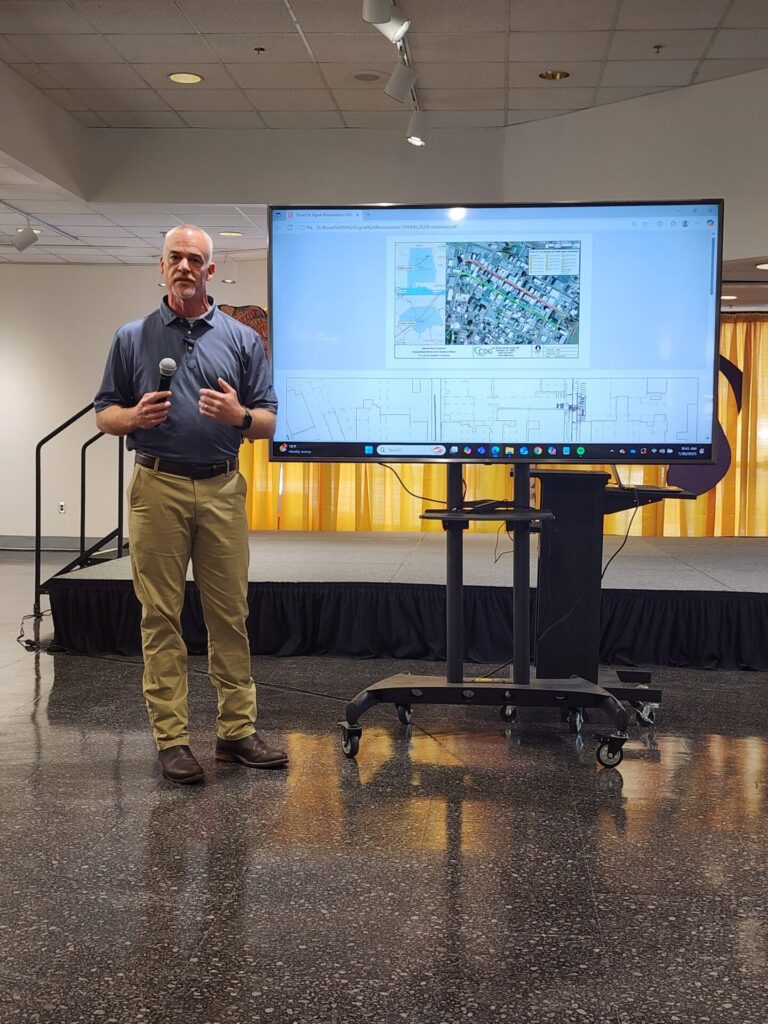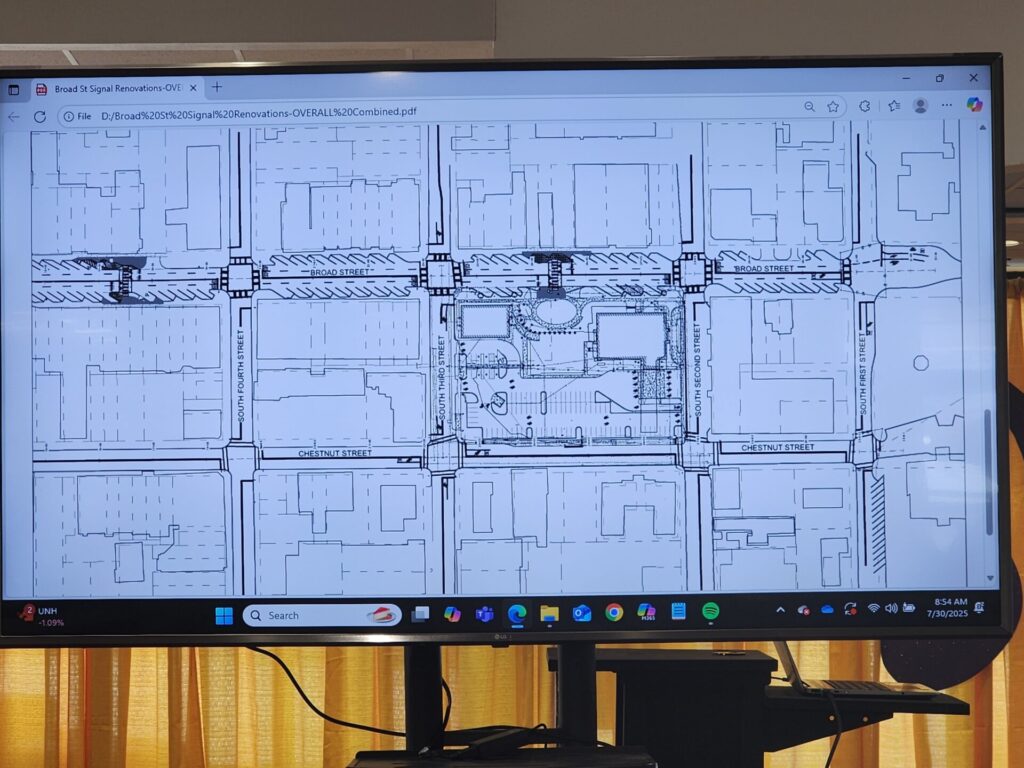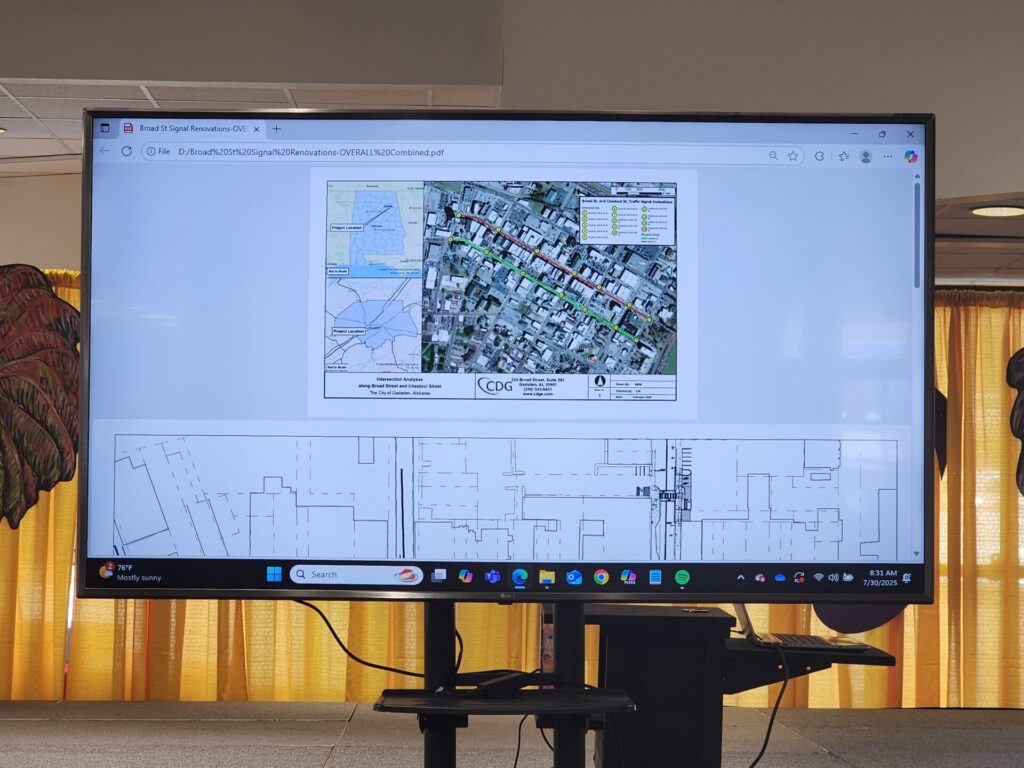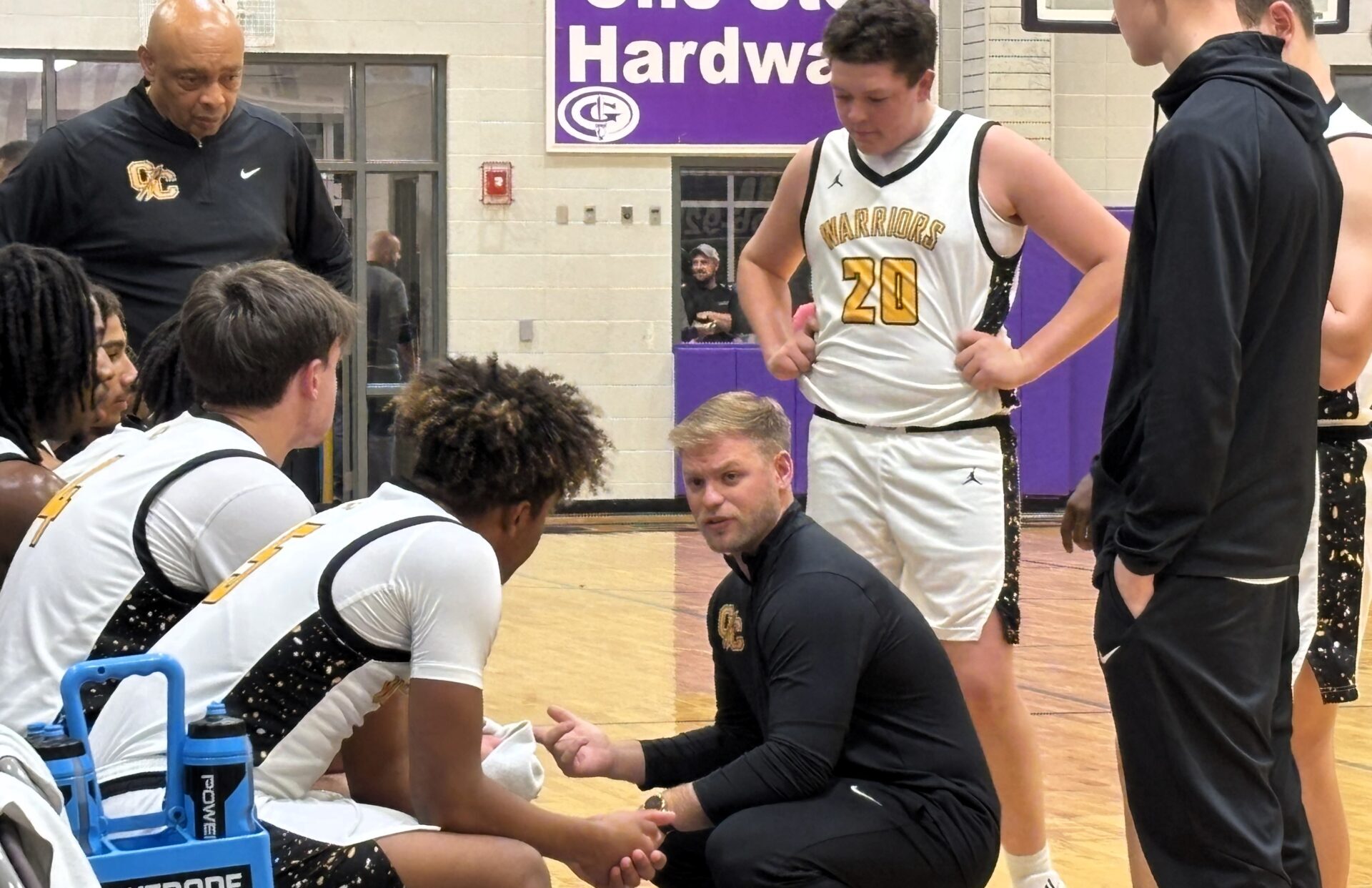Big Changes Coming to Downtown Gadsden Traffic—What You Need to Know
Traffic Light Removal and Stop Sign Conversion Planned for Downtown Gadsden

GADSDEN – Downtown Gadsden is set to undergo major traffic changes as city leaders move forward with plans to replace several traffic lights on Broad and Chestnut Streets with four-way stop signs. The proposal, designed to calm traffic, reduce accidents, and improve pedestrian safety, was the focus of a public meeting held Wednesday, July 30, at the Cultural Arts Center.
The meeting was organized by Downtown Gadsden Incorporated (DGI) in collaboration with the City of Gadsden. Attendees included Kay Moore, Director of DGI; Heath Williamson, City Engineer; Tina King, Director of City Services; Councilmen Kent Back and Jason Williams; representatives from the Gadsden Police Department; downtown business owners; and members of the public.

Moore, who organized the meeting, informed downtown businesses in advance to ensure they were aware of the proposed changes and had an opportunity to participate. She contacted several Main Street Alabama cities that had made similar traffic adjustments. Feedback from those cities was overwhelmingly positive toward switching from traffic lights to stop signs.
Tina King, who also owns a business downtown, has advocated for this change for over a decade. She said the idea gained renewed momentum when she recently discussed it with City Engineer Heath Williamson. Among the concerns cited were speeding and non-compliance with traffic laws, particularly drivers accelerating to beat red lights. Officials say that behavior increases the risk of collisions, especially in congested downtown areas.
Another concern is the volume of non-destination traffic—vehicles using Broad and Chestnut Streets merely to pass through town rather than to stop and visit local shops or restaurants. City leaders aim to make downtown safer and more inviting for pedestrians and those spending time in the area.
City Engineer Heath Williamson presented technical details of the plan. Traffic studies were conducted between First and Seventh Streets on Broad and Chestnut, including vehicle counts at each intersection. Based on the results, only the intersection at Broad and First Street was found to still warrant a traffic light. Locust Street will also remain signalized due to interactions with train traffic. the other intersections on both Broad and Chestnut from 2nd to 7th will be converted into 4way stop sign controlled intersections.

Williamson said all intersections being converted to four-way stops meet visibility standards and are expected to score as safe or safer under the new traffic control system. Intersections are graded on a safety scale from A to F, and modeling showed the intersections performed at least equally well or better under stop sign control.
The project includes the installation of raised concrete crosswalks mid-block. These serve both pedestrian safety and traffic-calming purposes, encouraging slower vehicle speeds without the maintenance costs associated with traditional speed humps. Financial estimates suggest that switching to stop signs and raised crosswalks could save the city approximately $35,000 annually.
Sidewalk and ADA-compliant ramp improvements are already underway. The city anticipates beginning the removal of certain traffic lights within the next four weeks. During a one-month transition period, traffic lights will operate as flashing red signals, accompanied by new signage, allowing drivers to adjust. Gadsden Police will monitor traffic and gather data before the full removal of the lights.
Emergency services, including police and fire, have reviewed the plan and raised no operational concerns. Officials say they are prepared to make adjustments if unexpected issues arise.
Additional raised crosswalks are planned for Chestnut Street near a church and possibly at Fifth Street. Similar crosswalks have been used successfully in other areas, including at the Sand Mountain Amphitheater.
Broad St Signal Renovations-OVERALL Combined
Kay Moore also shared detailed feedback from other Main Street cities across Alabama:
Anniston: “Honestly, I am glad this is something that you are doing because I want to do it too. We have ALL traffic lights and people fly through. I have mentioned doing every other intersection as a 4-way stop.”
Oxford: “A few years ago (2018-2020) we underwent our streetscape project in a four-block area. The old traffic signals were removed and stop signs were put in place. It has slowed traffic tremendously and makes the traffic flow a lot more effectively. The only negative to this change is that it is sometimes difficult for a person backing out of the on-street parking into the continuous flow of traffic near a 4-way stop.”
Athens: “We had two lights replaced 2 years ago with stop signs and it slowed the traffic significantly. We are BEGGING the city to switch out more. Our main corridor through downtown is Jefferson Street. We would love to have 2 lights on this street changed to 4-ways. The way traffic treats pedestrians from one block (4-way) to the next over which is Jefferson (traffic lights) is vastly different. 4-way: Very patient, will wave pedestrians across, slower overall. Traffic light: cars run it constantly, I have almost been hit several times as have others, they pull into crosswalk which isn’t done at the 4-ways, and they are hauling. Here is my two cents… the people that are speeding through downtown and running red and yellow lights are NOT stopping to eat in our restaurants and shop in our stores. If they find another way to get where they are going, good riddance.”
Florence: “We use traffic signals but I have talked to several walkability-focused groups that certainly advocate for the stop signs rather than the traffic signals. We do have a speeding issue here too and the transition you’re describing has been on my mind as well. Vehicles speeding through the main street corridors is such a detriment to the walking traffic that we desperately need in our downtowns. I hope this feedback helps in your journey.”
Birmingham Historic 4th Ave District: “We are traffic lights throughout the district, however we are planning a transformation period in the next two-three years to calm traffic.”
Montevallo: “We only have traffic signals on our Main Street and no speed tables so I’m not sure if I have any relevant info for you on switching to stop signs. I think your traffic calming plan sounds great though.”
Eufaula: “We had lights, but installed a roundabout a few years ago and that was a nightmare. We finally got it reversed and put a sign there.”
LaFayette: “Same for us here in LaFayette. ALDOT is actually doing a road diet and planning to turn our parking into parallel as we speak.”
Heflin: “Unfortunately, we are a state highway so these decisions are out of our hands.”
Ft. Payne: “We are on a state highway and have 18 wheelers on our streets all day long. We have traffic signals.”
Moore also noted that Mobile is in the process of replacing 23 out of 58 of its traffic signals with stop signs as part of a larger traffic calming initiative.
For additional context, Moore shared an article that inspired part of her research:
“For a More Walkable City, Replace Signals With All-Way Stops”
City officials acknowledge that any change to traffic patterns will take time for the public to adjust to but believe the long-term improvements in safety, downtown accessibility, and cost savings will be clear. The city encourages residents to contact the Engineering Department with any questions or concerns. They also encourage the public to research and read studies showing the benefits of the transition.
https://www.cityofgadsden.com/




